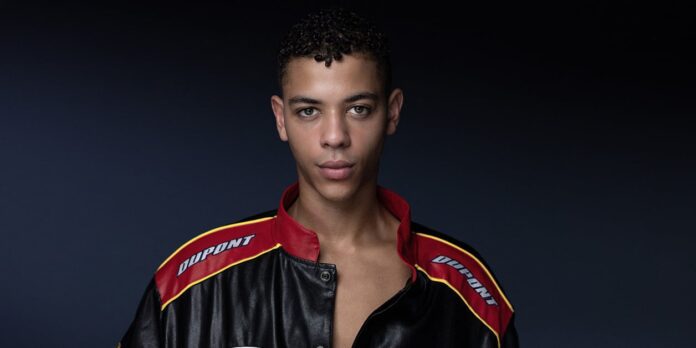**Title: Guillaume Diop: The Rise of a Dancing Star at the Paris National Opera**
Dance is an art that transcends cultural and ethnic barriers, and Guillaume Diop is the embodiment of this spirit. Following an inspiring performance of Gisele in Seoul, Paris National Opera dance director José Martinez excitedly announced the appointment of Guillaume Diop as “star dancer”. At 23 years old, this young artist was overcome with emotion, surrounded by applause and congratulations. However, Guillaume Diop's journey to this recognition was not only a dance success story, but also a testimony of overcoming and determination.
Guillaume Diop rose to prominence in March 2020 when he co-signed a manifesto that addressed the issue of race at the Paris Opera. Three years after this manifesto, he achieved a historic milestone by becoming the first black dancer to receive the prestigious title of “star”. Although the Paris National Opera already had black and mixed-race dancers in its cast, this new designation represents a special consecration. Titles such as “Quadrilha”, “Corifeu”, “Subject” and “Principal Dancer” are usually earned through rigorous competitions, but “star” status is an executive nomination reserved for the best of the best.
For Guillaume Diop, the news was overwhelming. “The feeling was indescribable. I was deeply moved,” he revealed. “Being a principal dancer is a dream for all of us. We have worked tirelessly since childhood, not knowing if one day it will become reality. This decision is not in our hands; It is the management that decides.” The news of her appointment echoed on social media, with many comments highlighting the color of her skin.
The appointment of Guillaume Diop as the first black ballerina at the Paris National Opera is a significant achievement, but it also raises questions about diversity in the world of classical dance. Guillaume recognizes the importance of his role as a model. “I didn’t expect it to have such an impact. I'm the first black dancer, it's a fact, but I'm not sure how I should position myself in relation to that”, he explained. “I’m glad this is happening; is important. I think about my younger self. Knowing a mixed-race dancer in the opera would have been comforting. I believe we underestimate the importance of role models.”
Guillaume Diop's trajectory in dance began improbably in a family that was not immersed in art or ballet. Her only reference was her older sister, who, as a child, enrolled in a contemporary dance course once a week. It was there that Guillaume had his first contact with the world of dance. At the age of 4, he asked his mother to enroll too, and she agreed, thus blessing the beginning of his dance journey. Guillaume describes dancing as a form of expression from a young age. “Dancing was a means of expression for me. I remember being a shy but energetic child; I loved moving my body. It was mostly instinctual for me.”
At the age of 8, Guillaume's teacher already recognized his potential and advised his parents to enroll him in classical dance studies at the conservatory in the 18th arrondissement of Paris. The decision was not an easy one for his parents, especially Guillaume's father, who had Senegalese origins and was initially skeptical of his son's choice to embrace the discipline of dance. In Senegal, dancing was primarily associated with the women in Guillaume's family, and his father had a different view of what was appropriate for a boy, let alone a mestizo.
However, his mother vehemently defended his passion for dancing, believing it was Guillaume's calling. Although it wasn't an easy transition, her mother supported her dance journey. “She believed it was my calling and that I should follow this path. But I admit it wasn't easy; this world was totally foreign to them, and they did not understand its codes.”
Before entering dance school, Guillaume Diop faced comments about his skin color. “I was told that I would not be accepted into the Opera precisely because I was black,” he recalled, also mentioning other criticisms related to his “flat feet” and his “big buttocks”, coming from both other children and teachers. However, these criticisms did not discourage him; on the contrary, they served as a driving force. “I kept telling myself, ‘I’m going to show you I can do this.’”
Even as a teenager, he still faced doubts about his place in classical dance due to the color of his skin. He wondered if he could play leading roles, such as a prince, as a black man. His search for answers took him across the Atlantic to participate in a workshop in New York with the Alvin Ailey company, made up mainly of African-American dancers. This experience was transformative for Guillaume. “At a certain point, I realized I needed to be surrounded by people who shared my experience, and that did me a lot of good,” he shared. This experience strengthened his determination and clarified his dream: he wanted to be a classical dancer and be part of the opera. He refused to self-censor because of his racial background, understanding that it was part of his identity and made him unique.
Despite his challenging journey, Guillaume Diop did not receive immediate support from his ancestors
in Senegal. His family rarely discussed his career beyond his classical studies. However, recently, when her grandmother learned of her star nomination, her reaction was one of excitement. “You're on television, it's crazy!” she exclaimed when she saw her grandson on the screen. Guillaume felt pride in his grandmother's voice and recognized that she was beginning to understand the magnitude of her achievements, something that moved her deeply.
Before being named a star, Guillaume Diop faced a series of challenges at the Paris National Opera. Initially, he was officially just an understudy for leading roles. However, through a series of coincidences and his own exceptional talent, he began to play these roles in productions such as “Romeo and Juliet”, “Don Quixote”, “La Bayadère” and “Swan Lake”. His appointment as a star brought more responsibility, pressure and the expectation of being an example to others. However, it also brought a sense of comfort. “When you're a stand-in, you have little time to prepare and adjust to the main moves of the production,” explained Guillaume.
Guillaume Diop's next role is that of the blue soloist in “The Song of the Wandering Companion”, a piece choreographed by Maurice Béjart. In this ballet, he plays a dreamy teenager looking for guidance and finds another soloist, the red character, who will play this role. This work is a metaphor for the transition from childhood to adulthood, and represents an ideal opportunity for Guillaume to shine as a star in opera.
At a time when diversity and representation are increasingly valued in the dance world, Guillaume Diop's story inspires and highlights the importance of inclusion and perseverance. Her appointment as the first black star ballerina at the Paris National Opera is not only a personal milestone, but a significant step towards a more diverse and inclusive future in the performing arts. Guillaume Diop proves that talent and passion can overcome all barriers, regardless of skin color.
In short, Guillaume Diop's journey is a story of determination, overcoming and success in classical dance. His appointment as a star is a testament to his exceptional talent and a historic milestone at the Paris National Opera. Diversity and inclusion are fundamental issues in the world of dance, and Guillaume Diop is playing an important role in promoting these values. Her story inspires young talents to pursue their dreams, regardless of the barriers they may face. With his upcoming role as blue soloist, he continues to shine as a rising star in the world of classical dance.

